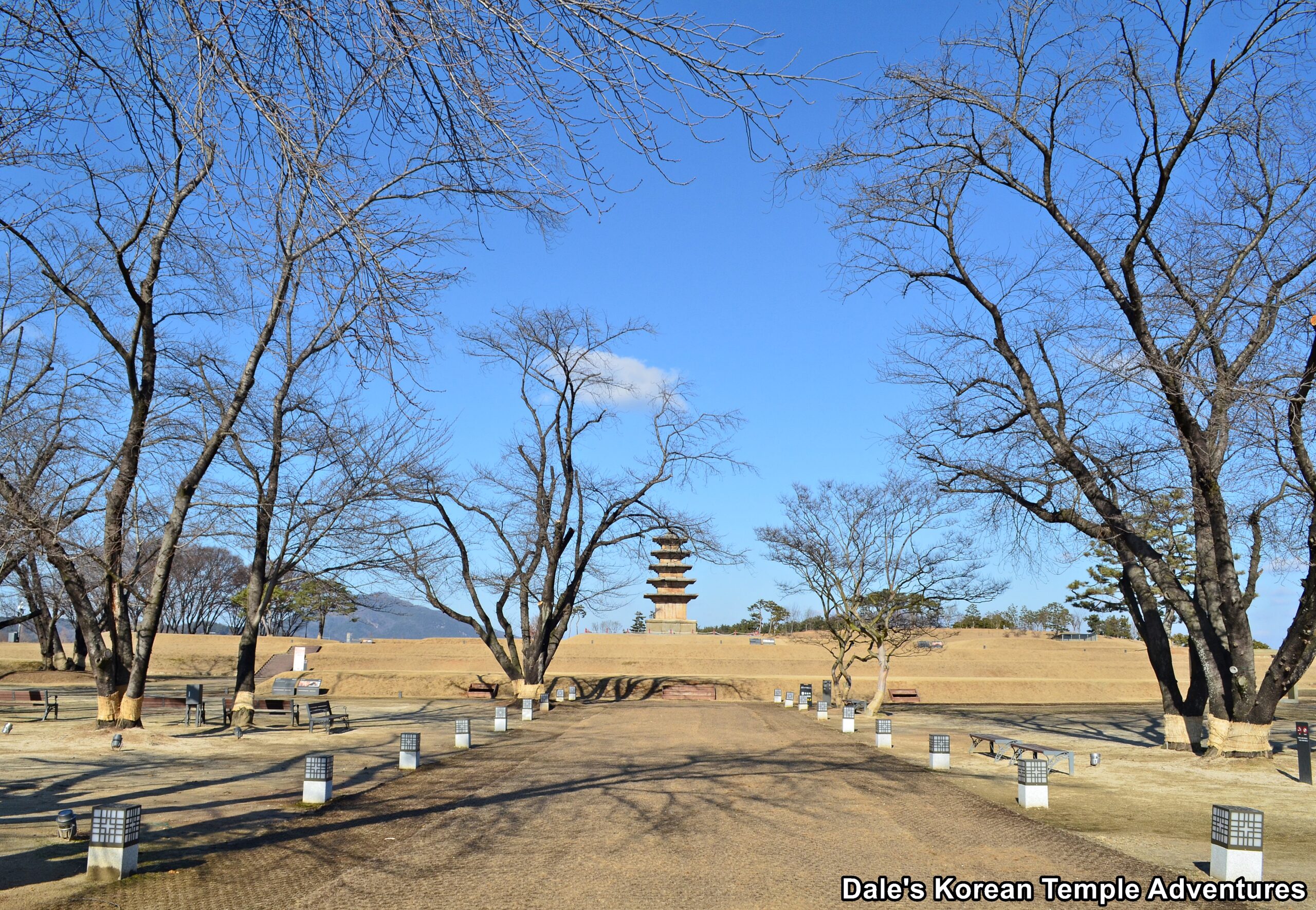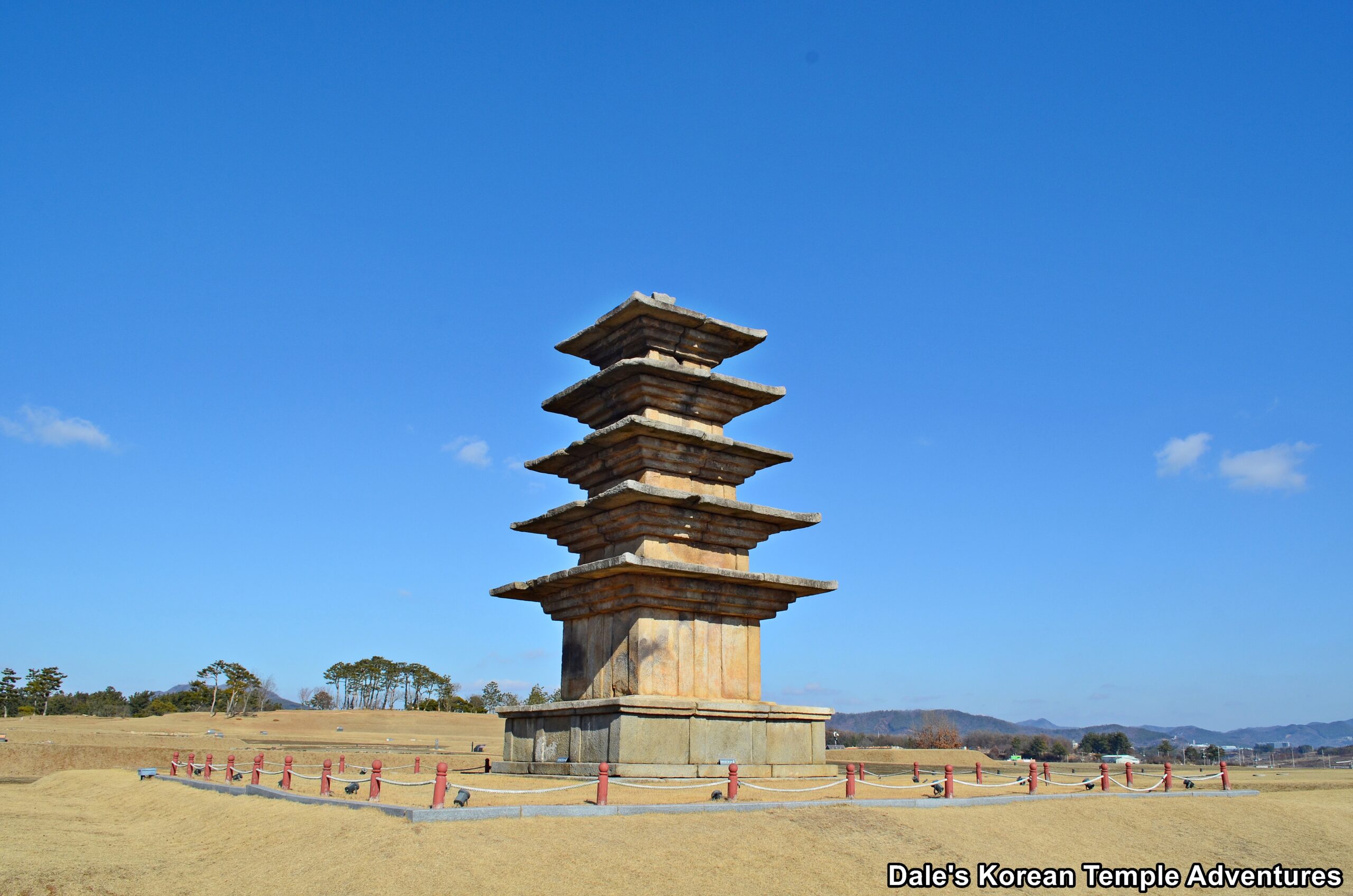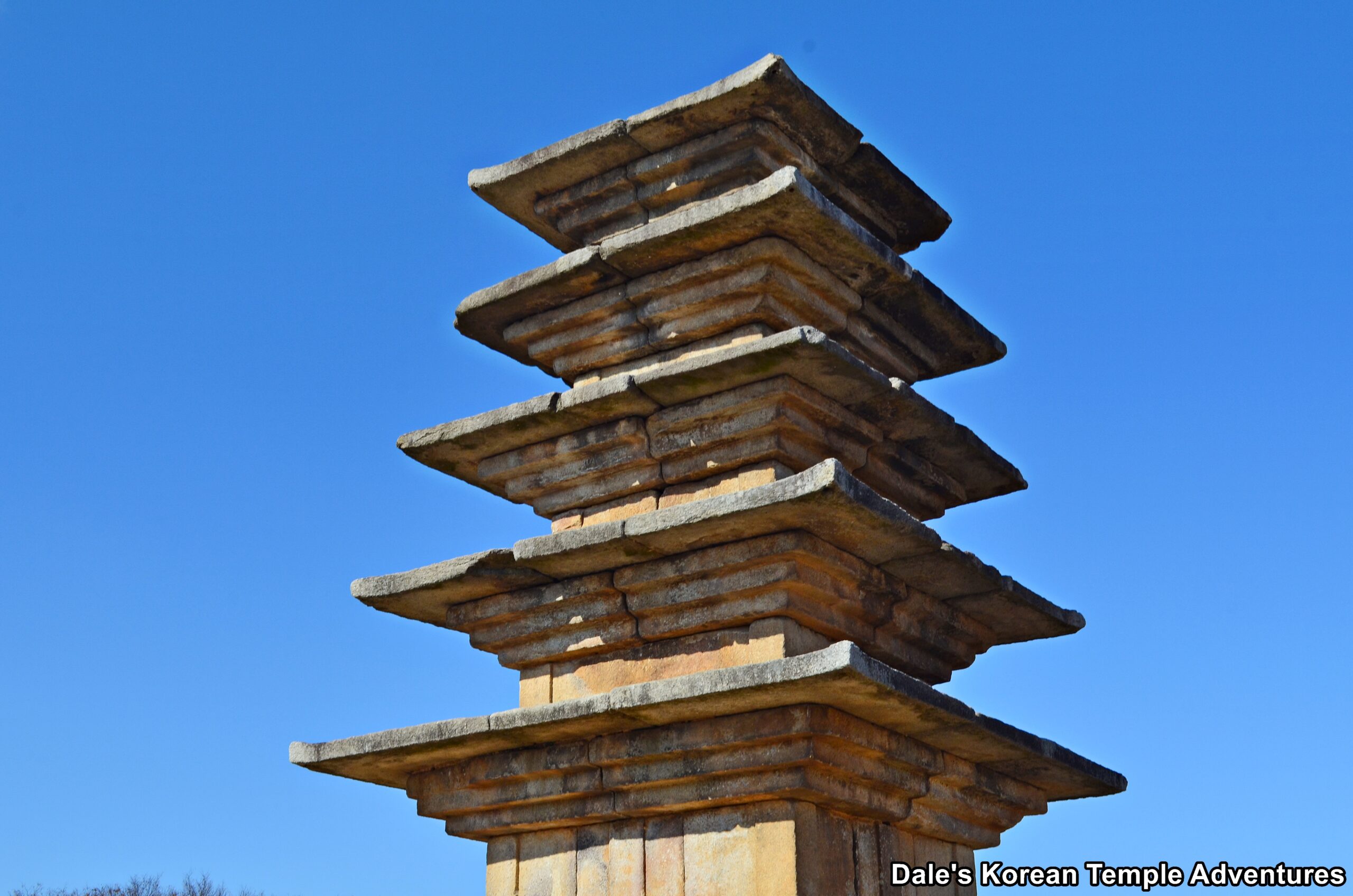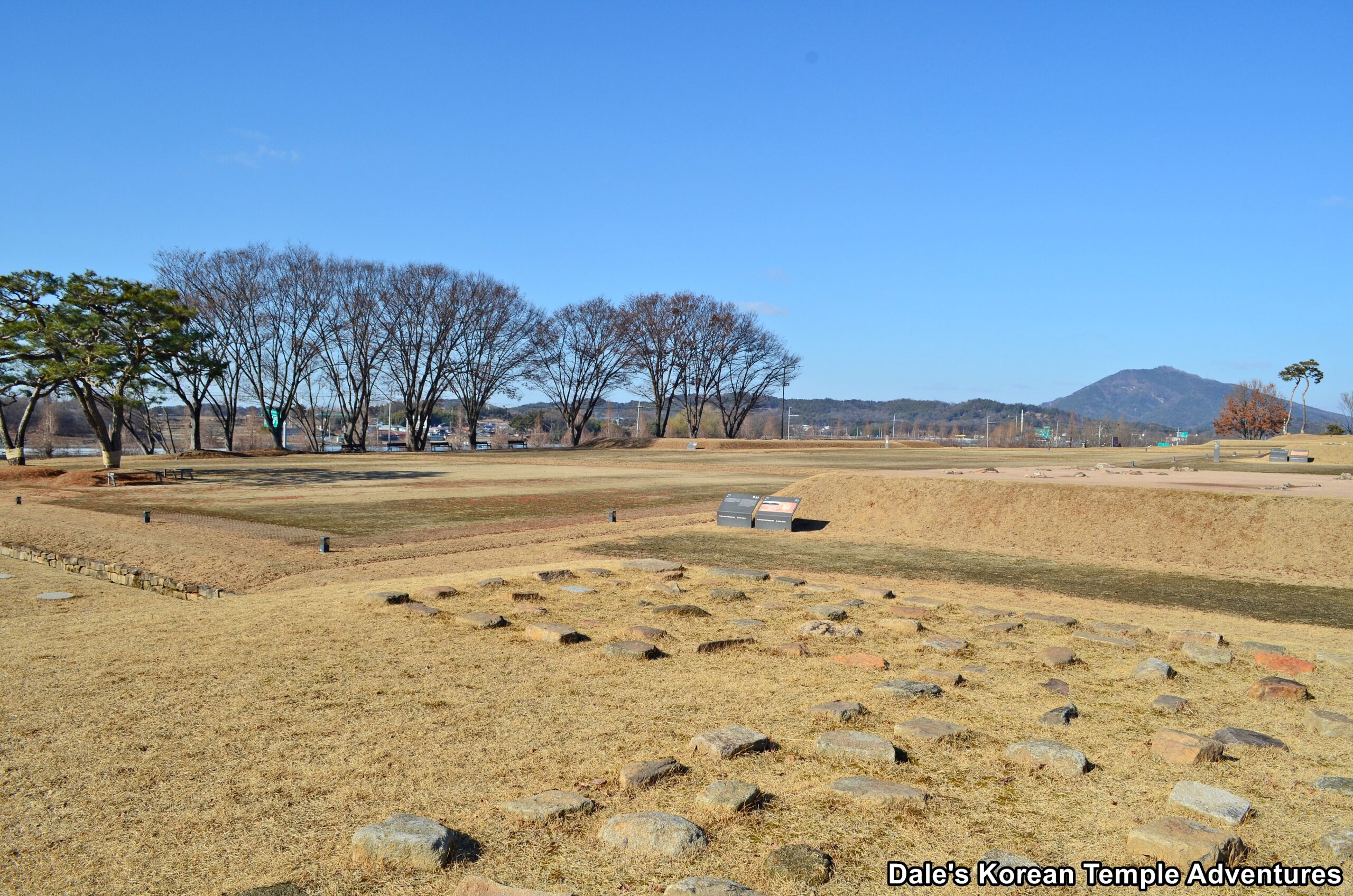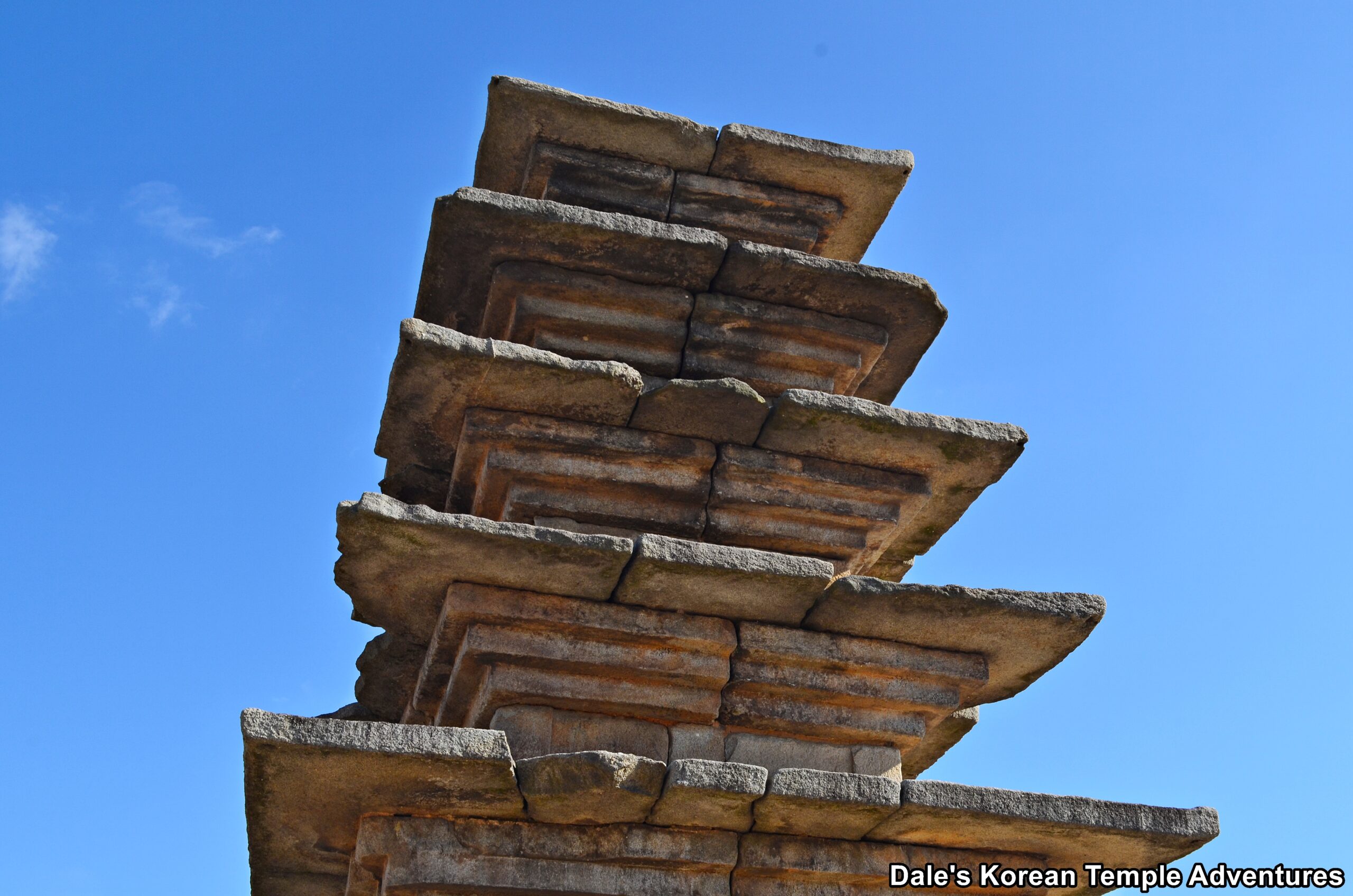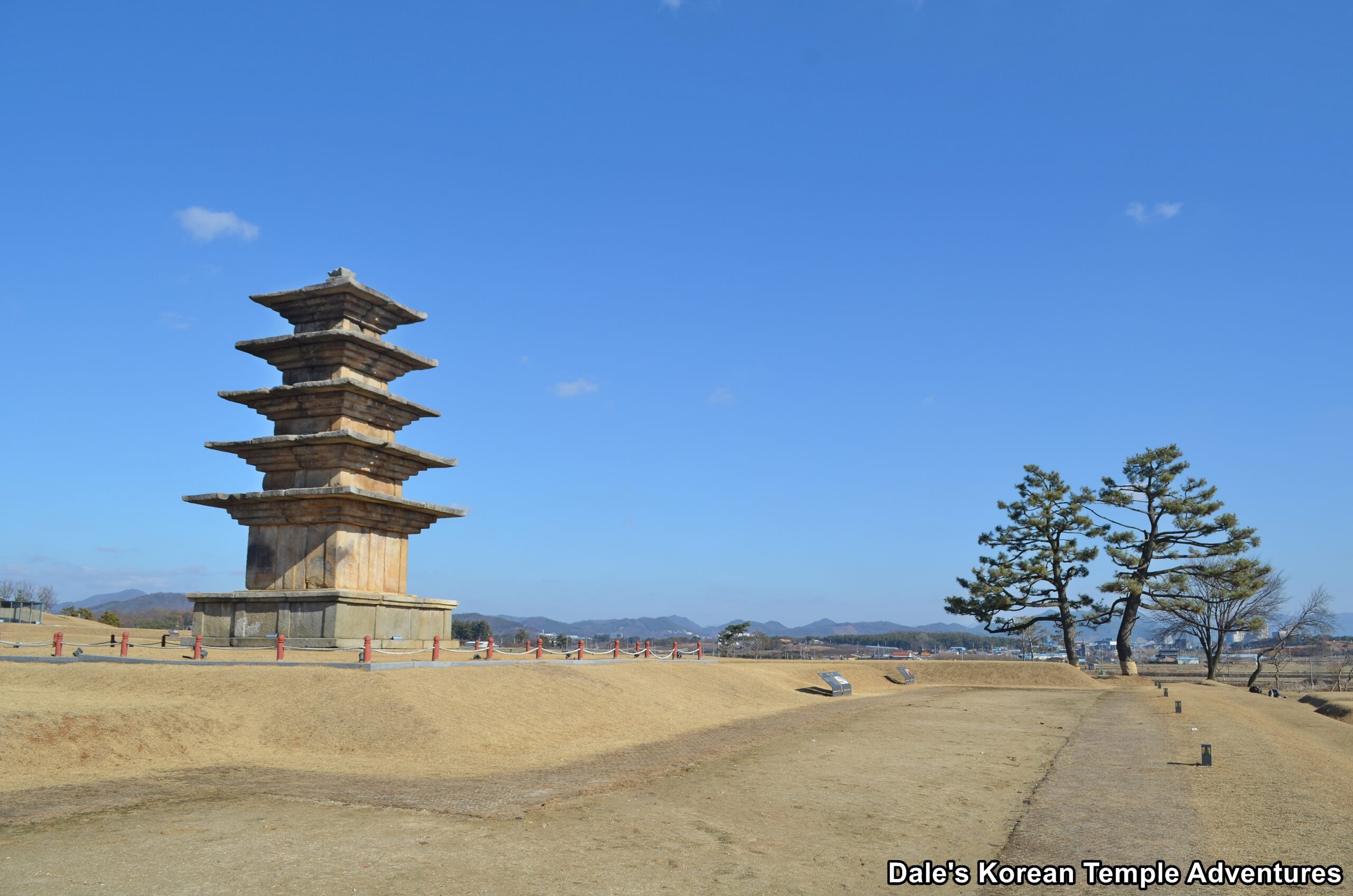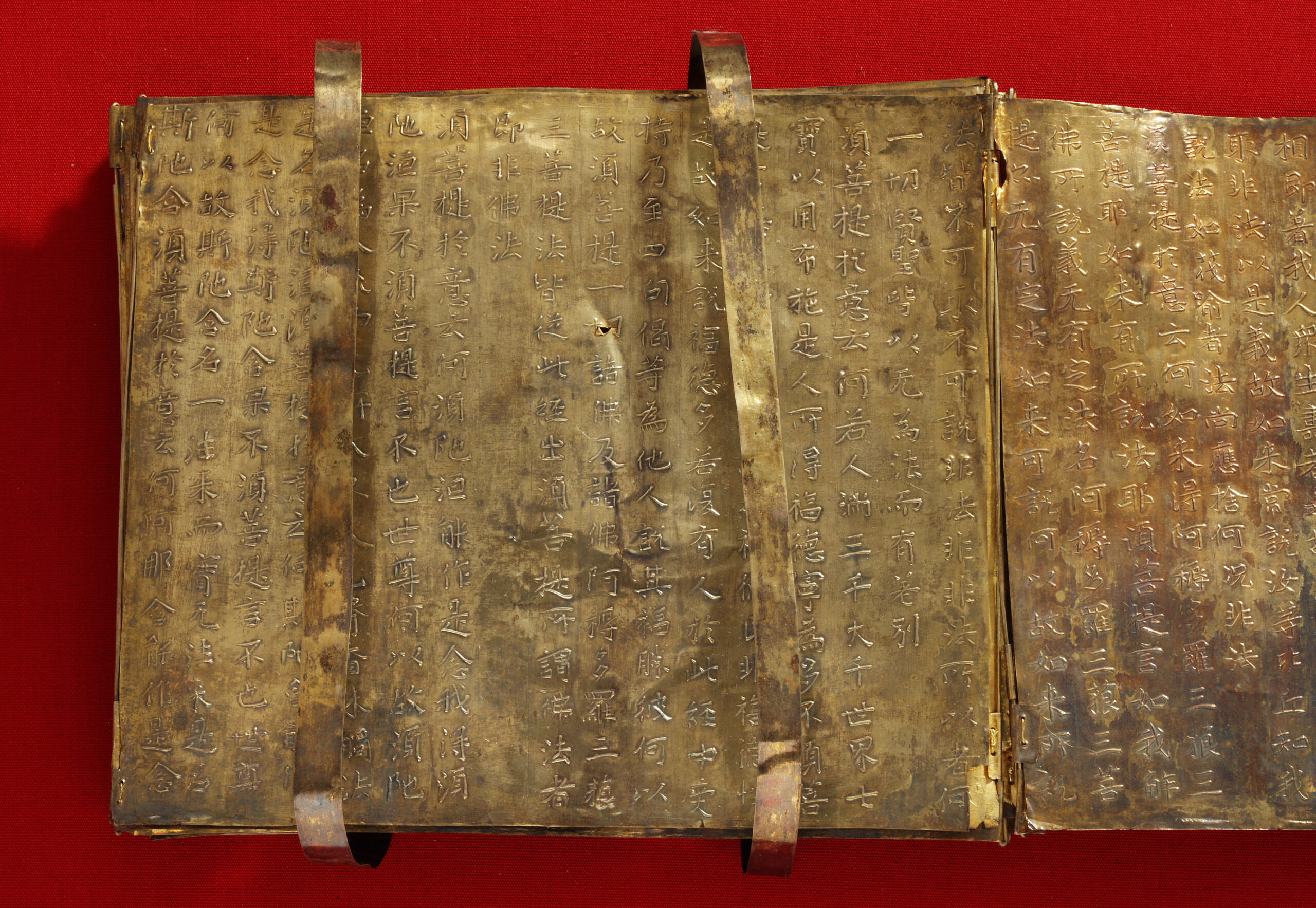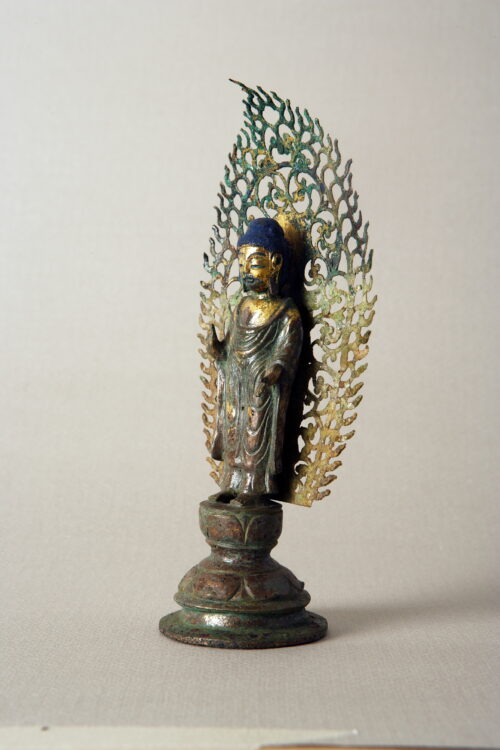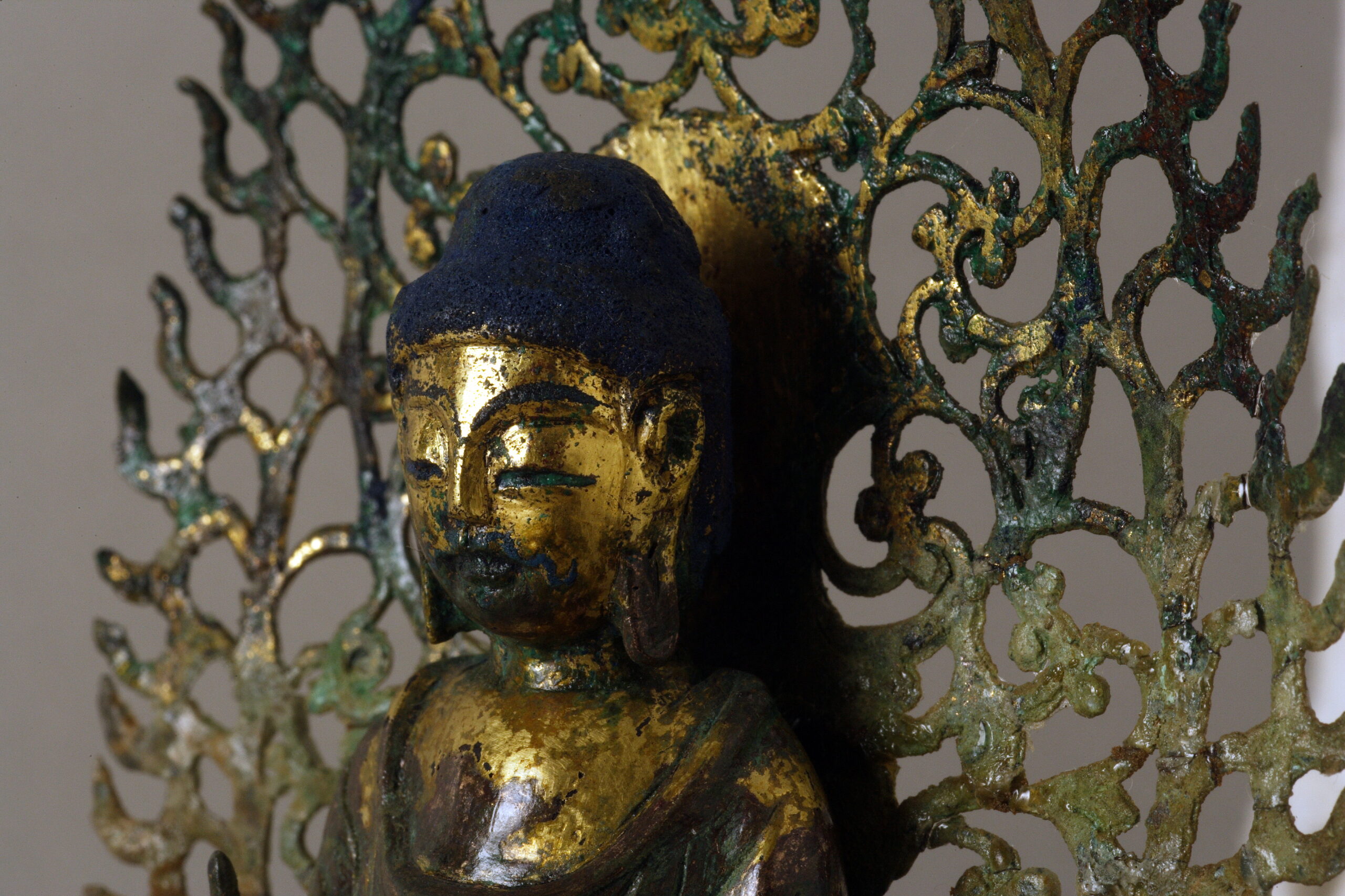Five-Story Stone Pagoda in Wanggung-ri – 익산 왕궁리 오층석탑 (Iksan, Jeollabuk-do)
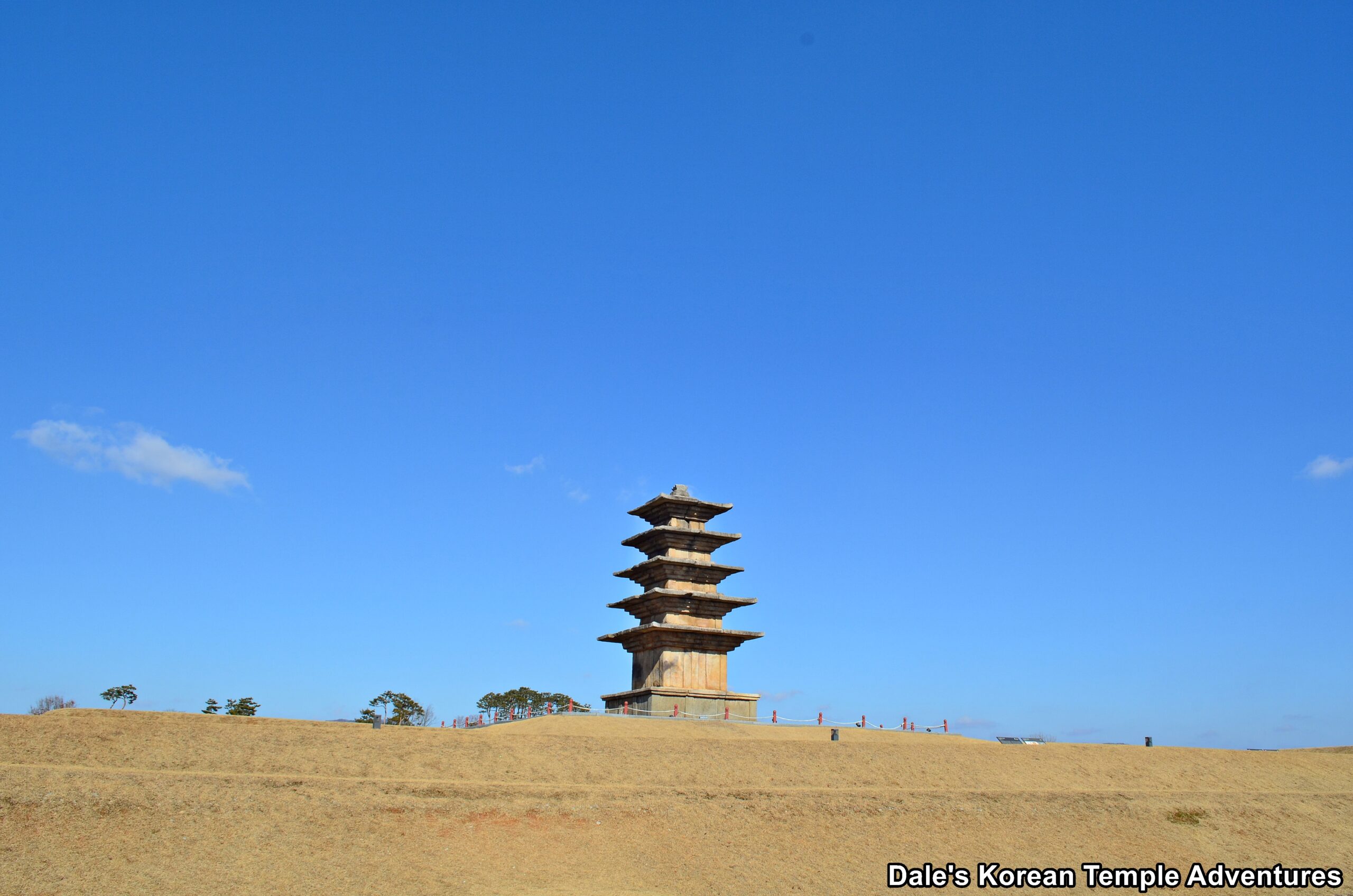
Temple Site History
The Five-Story Stone Pagoda in Wanggung-ri is located in northeastern Iksan, Jeollabuk-do in the the Archaeological Site in Wanggung-ri, which is a Historic Site. It is unknown as to when this pagoda was first built, whether it was during the Baekje Kingdom (18 B.C. – 660 A.D.), or during Unified Silla (668-935 A.D.), or during the Goryeo Dynasty (918-1392). However, what is known is that the pagoda was created in the typical Baekje Kingdom style. From 1965-66, the Five-Story Stone Pagoda in Wanggung-ri was dissembled and reassembled. Prior to this, the base of the pagoda was buried in the ground. In total, the large pagoda consists of a five-story structure with a small finial remaining atop the pagoda.
The Five-Story Stone Pagoda in Wanggung-ri is National Treasure #289. And the Reliquaries from the Five-Story Stone Pagoda in Wanggung-ri found inside the historic pagoda during its reconstruction in the 1960’s are also a National Treasure: National Treasure #123. Additionally, the site where the Five-Story Stone Pagoda in Wanggung-ri is located in the Archaeological Site in Wanggung-ri is Korean Historic Site #408.
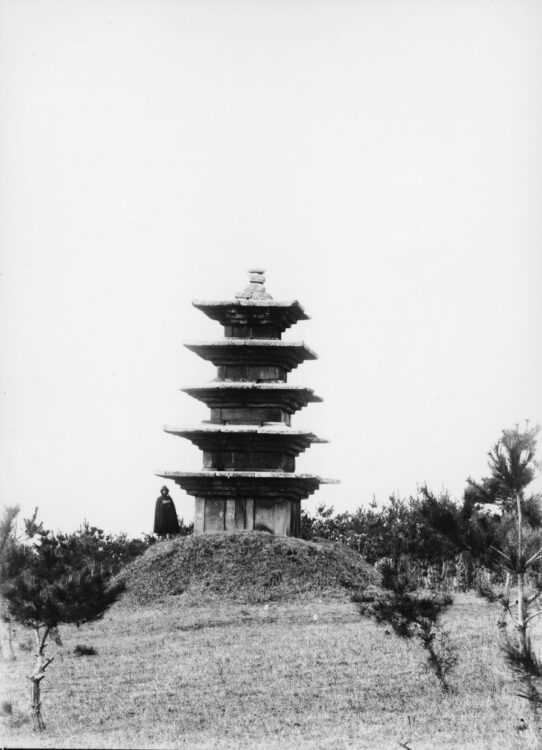
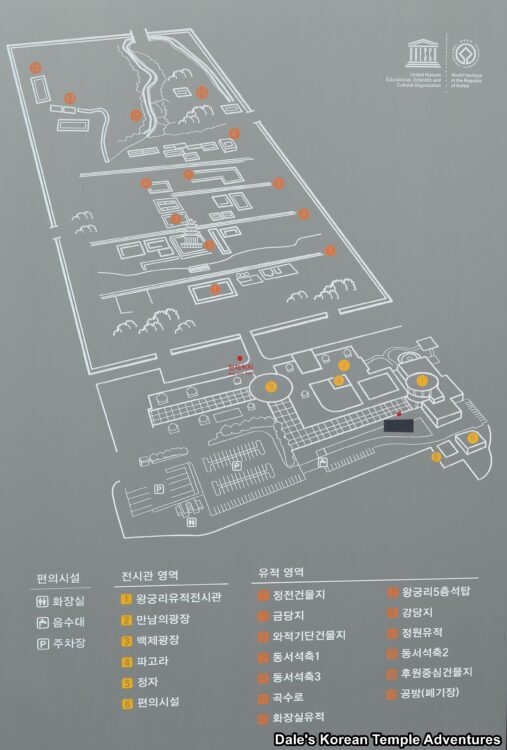
Temple Site Layout
From the Archaeological Site in Wanggung-ri‘s parking lot, you’ll make your way north towards the Historic Site where the Five-Story Stone Pagoda in Wanggung-ri is located. The Historic Site, which is officially known as the Archaeological Site in Wanggung-ri, is also called the “sacred place in Wanggung-ri.” There are numerous interpretations about the site. Some scholars believe it to be the capital of the ancient Mahan Confederacy (1st century B.C. to 5th century A.D.). Others consider it to be the place where King Mu of Baekje (r. 600-641 A.D.) built a new palace and the capital. While some others think the historic site to be the capital of Later Baekje (892–936 A.D.), which was founded by Gyeon Hwon (r. 892 – 934 A.D.). And finally, some scholars believe it to be the place where Anseung (fl. 668-683 A.D.) founded the Kingdom of Bodeok.
In the historic text, the Gwanseeum eungheomgi, or “The Record of the Miraculous Responses of Avalokitesvara” in English, it states that King Mu of the Baekje (r. 600-641 A.D.) moved the capital of his kingdom to Iksan. From this, it’s been interpreted that the capital was moved to Iksan during the late Baekje Kingdom.
Several excavations have been conducted on the site by various groups and agencies. From these excavations, it’s believed that the archaeological remains date back to the late Baekje Kingdom to the late Unified Silla Dynasty. Two kilns for baking roof tiles were discovered at the site from Unified Silla. They were discovered some thirty metres east of the Five-Story Stone Pagoda in Wanggung-ri. There were also remains from a fortress, believed to be a rectangular designed fortress, built on the flat ground. These remains were discovered and excavated around the pagoda. In addition to these archaeological discoveries around the Five-Story Stone Pagoda in Wanggung-ri, the remains of a temple, and its layout, have been discovered around the pagoda, as well. In total, some 50 palace and temple building sites have been discovered at the historic site.
Having looked around the Archaeological Site in Wanggung-ri, and now standing in front of the Five-Story Stone Pagoda in Wanggung-ri, you’ll notice the beautiful five-story stone structure reaching upwards. The weight of the pagoda rests upon a stout base and a longer foundation. At each of the four corners of the foundation are installed octagonal corner stones. These are meant to serve as corner columns between the long, square stones of the foundation. This is done to imitate a wooden pagoda design. Inside the columns, they are filled with earth, in which fragments of Baekje Kingdom roof tiles were discovered. As for the five stories of the structure, each story consists of a thin, flat roof stone that’s slightly turned upwards at the corner. The marks left on each of the corners of the five stories suggest that wind chimes once hung from the pagoda. Additionally, each roof stone has a supporting stone that holds the structure aloft.
In 1965, during the reconstruction of the pagoda, the Reliquaries from the Five-Story Stone Pagoda in Wanggung-ri were discovered between the base and the first story of the pagoda’s body. It was from these relics, as well as the design of the foundation, that allowed scholars to believe that the pagoda dates back to the early Goryeo Dynasty. The pagoda is a beautiful combination of Baekje and Silla style pagodas.
As for the Reliquaries from the Five-Story Stone Pagoda in Wanggung-ri, which are National Treasure #123 and housed at the Iksan National Museum, they date back to a wide range of time spanning from the Baekje Kingdom (18 B.C. – 660 A.D.) to the Goryeo Dynasty (918-1392). More specifically, a bronze standing statue of the Buddha with a mandorla and pedestal were discovered, as well as a ceremonial hand bell. Both were found in the eastern holes of the top side of the platform. Additionally, incense was found in the northern part of the holes of the pagoda. Unfortunately, the other holes on the northern part of the pagoda with which relics could be discovered showed signs of robbery. The two holes made at the centre of the upper side of the roof stone of the first story of the pagoda’s body produced a green glass sari bottle with a lotus bud-shaped lid and a set of 19 pure gold sheets of the Diamond Sutra tied with two gold strings. These golden relics were safely secured inside a double-walled reliquary.
How To Get There
To get to the Five-Story Stone Pagoda in Wanggung-ri, you’ll first need to get to the Iksan Train Station. From here, you’ll be able to catch either Bus #65 or Bus #65-1. After 34 stops, or 38 minutes, you’ll need to get off at the “Wanggung-yujeok jeonsigwan – 왕궁유적 전시관” stop. From this stop, you’ll need to walk about 5 minutes, or 300 metres, to get to the site.
Overall Rating: 5.5/10
The Archaeological Site in Wanggung-ri stretches almost 220,000 m2 of land in Iksan with the Five-Story Stone Pagoda in Wanggung-ri being its crown jewel. Large in size, and creative in design, the historic pagoda stands at the front of what was formerly both a palace and temple. Once you’ve explored the historic pagoda, perhaps take the time to explore the rest of the grounds with the Iksan National Museum as your final destination to enjoy the contents of the Reliquaries from the Five-Story Stone Pagoda in Wanggung-ri.
